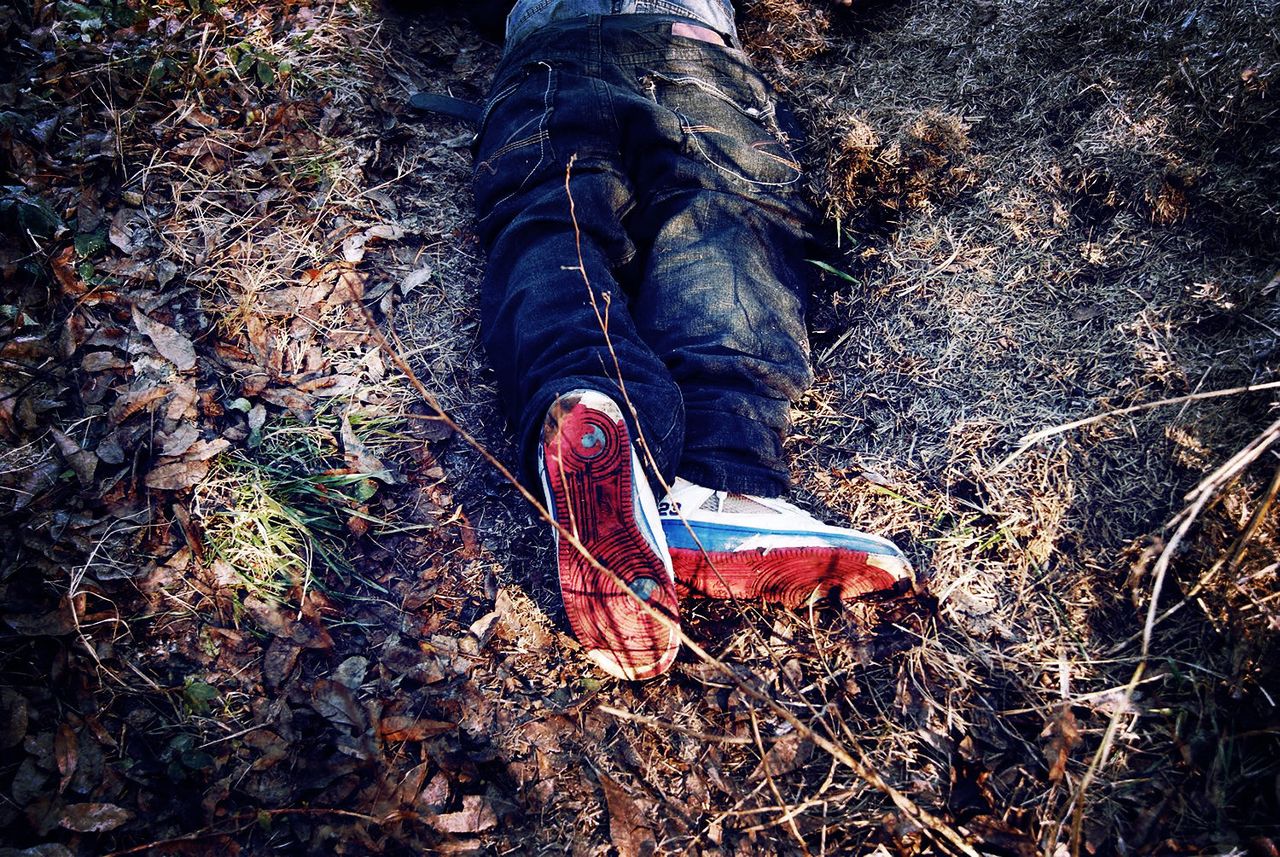It felt about as cold as it can get in Warner Robins, Georgia, in the early morning hours of Jan. 24, 2011. Robert Chambers, 19, saw his breath as he walked along the dirt path that traced the edge of a wooded area near Feagin Mill Middle School.
Maybe he thought about girls. Everyone knew Chambers as a ladies man who carried his skinny, 5-foot-8-inch frame with considerable swagger. Just the day before, Chambers had stood in a driveway with two neighborhood girls, flirting and laughing.
Maybe he thought about his future. He had dreams of being a contractor one day and building a community center for teens who needed a place to go to stay out of trouble. Like many young men his age in that part of the state, Chambers had dropped out of high school, but was working on getting his GED. In the meantime, he just wanted a job.
That morning, just as he did on many mornings, Chambers made the 50-minute walk from his mother’s home to the Five Star Nissan dealership, where he’d often ask for work detailing cars. He also expected a call that day about a job at a local grocery store.
Maybe his thoughts turned to his family: His mother, whom he adored, was raising Chambers and his younger brother, Roderich, and sister, Ka'Treana, on her own, working two jobs to provide for the kids. Maybe he thought about his siblings, who always went to him for guidance, or his uncle, who’d always been a father figure.
But there’s no way Chambers thought about what cops say he thought about that morning, his friends and family attest. Chambers was non-confrontational. He always avoided violence. He never even really got into trouble, for God’s sake, and in a town where police arrested twice as many blacks as whites, Chambers, an African-American, had no criminal history.
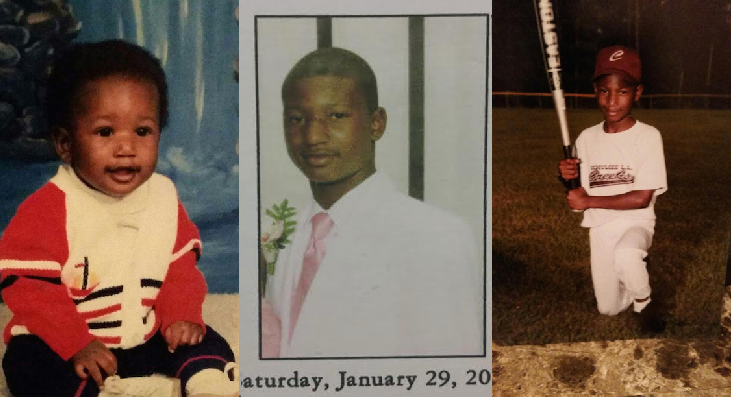
Yet later that morning, his mother, Sharese Wells, heard a knock on the door. A police officer stood in the doorway, along with the coroner.
Just a few minutes away from Wells' home, her son’s body lay in the dirt, blood pooling from his head. Next to him was a gun, which a Houston County officer said Chambers had dropped before the officer fatally shot him. Aside from the cop, who was unhurt, no one saw what happened. Police said Chambers had burglarized a nearby home, stolen a gun and put a cop’s life in jeopardy.
But maybe he didn’t.
Last month, lawyers for the Chambers family filed damning new court papers alleging that the Houston County police planted evidence on Chambers’ body and in the crime scene. Those court papers, including hundreds of documents and evidence, have been reviewed by The Huffington Post.
Here's What Police Say Happened
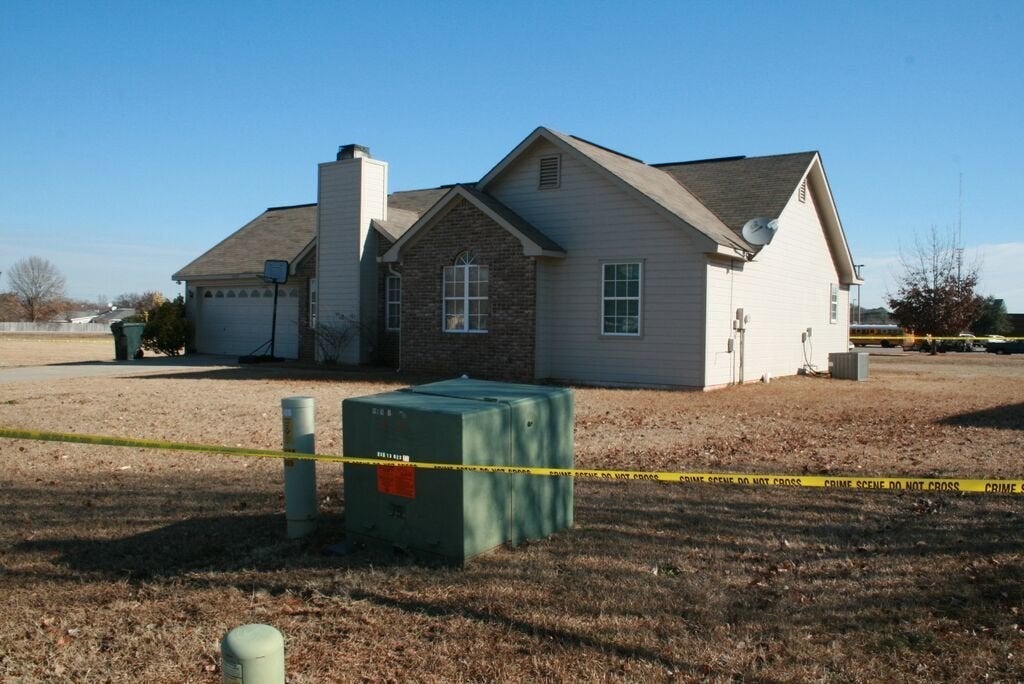
It was the second time that month that someone had broken into the home Robert Brown shared with his son, Antoninus White. On Jan. 12, 2011, a thief had made off with three guns and a Playstation 3. So when Brown, 63, came home on Jan. 24 to see his front door pried open, he knew it had happened again. He called the police.
Houston County Deputy Eugene Parker arrived at the residence at around 8:40 a.m. Brown told Parker he’d heard someone run out the back door, but he didn’t get a look at the suspect.
Nearby, 51-year-old Deputy Steven Glidden was doing what he usually did for the department: serving civil papers to people’s houses. Prior to joining the Houston County Sheriff’s Department, he’d worked as a cop down in Florida, and before that, he served in the Army for six years in the '80s. During his 10 years in Warner Robins, he’d never fired his gun in the line of duty.

When he heard a call on the radio about a nearby burglary, Glidden asked his supervisors for the green light to assist Parker. He got it.
Thirty minutes later, a short three-minute walk from Brown’s house, Glidden searched a wooded area near Feagin Mill Middle School. He’d just received a call: Parker told him a gun “may have been taken” from the house.
Glidden turned a corner on the dirt path, and saw a black teen walking alone. In a later deposition, he said Chambers had an “oh crap” look on his face. Glidden estimated the kid was 14 or 15 years old.
Glidden told Chambers to remove his hands from his jacket pockets.
“What’s goin' on, why?” Chambers asked.
In his deposition, Glidden described how he repeated his command, but Chambers didn’t listen. Instead, he kept walking toward Glidden until the two were within a couple feet of one another. Chambers stepped to the right, as if to pass, his hands finally leaving his pockets. But out of the corner of his eye, Glidden saw something: the butt of a black semiautomatic pistol in Chambers’ left pocket.
Glidden says he lunged after the weapon with his right hand, and a struggle ensued. When Glidden felt Chambers reaching for his service weapon, Glidden shot him with a Taser, but the electric rods couldn’t pierce through Chambers’ winter jacket. A camera on the Taser began recording, but it got knocked out of Glidden's hand and didn't capture much.
According to Glidden, he still managed to get Chambers to the ground. Seconds later, the teen got up, flinging his jacket down. The video recorded Glidden yelling for Chambers to get down. At some point, the gun Chambers had in his left jacket pocket fell out onto the ground -- but Glidden didn't realize that. Chambers started to run away.
Chambers ran toward a residential neighborhood. The teen still had a gun, Glidden thought, as he lifted his weapon and fired. A single round struck Chambers in the back left side of his head.
“He stiffened and fell to the ground,” Glidden later explained.
'A Gross Miscarriage of Justice'
Afterward, the police didn't offer much explanation to Chambers' mother, Sharese Wells.
“‘We believe that Robert was in a prior crime that led to the shooting and killing and his death,’” she recalled an officer telling her at her home the day her son died. “That was it. That was all the details they gave me.”
Wells said that before leaving her house, the officer turned around and said in passing: “‘Oh, and this is going to be on the news.’”
Sure enough, Wells heard her son’s name repeated on the news the following day. From the same bulletin, she learned who killed him: a cop. The newscaster said Chambers had robbed a house and stolen a gun, but Wells didn’t believe it. It didn’t add up.
In 2013, she hired a local lawyer and filed a wrongful death lawsuit in federal court against Glidden and the Houston County Sheriff’s Department. The lawsuit dragged on for two years until this past August, when a judge tossed the case out of court. Glidden’s use of deadly force, the judge ruled, “was reasonable under the circumstances and did not violate clearly established law.” A cop can legally shoot a fleeing suspect if he or she reasonably believes the person is a danger to the officer or other people.
Chambers’ family felt crestfallen. The police version of events would be the only one to survive in the public record. And no trial meant that the family would always feel in the dark.

The family had lost faith in their lawyer, so Chris Wells, Chambers' uncle, went online to see who had represented the family of Eric Garner -- the black father of six whose death from a police chokehold in New York grabbed national headlines and spurred massive protests. The lawyer's name was Jonathan Moore, and the family decided to contact him.
It was a Hail Mary. Who knew if a big, fancy New York City law firm would take on a 4-year-old case in Georgia?
Moore, and his partner, Luna Droubi, both attorneys at Beldock, Levine & Hoffman, agreed to look at Chambers’ death. But they made no guarantees they'd take on the case. Over the next month, the pair spent “nights and weekends” poring over documents, Droubi said.
“Once we started gathering stuff, our eyes ... we couldn’t believe it,” she said.
There were fingerprints that were never analyzed, a gun that didn’t match up to reports and another possible suspect in the burglary, among other inconsistencies.
On Sept. 2, the lawyers filed papers in court. The federal judge, they wrote, needed to reverse his previous decision. Anything else would be “a gross miscarriage of justice.”
The Houston County Sheriff’s Department declined to comment for this story.
Is This The Gun?
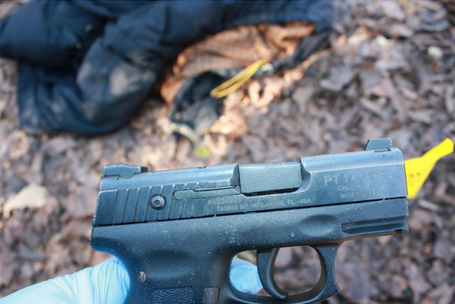
Droubi and Moore, the new lawyers on the case, say there are several inconsistencies surrounding the scene of the shooting.
First, photographs from the woods show a Blue Steel Taurus PT 145 Millennium Pro .45-caliber pistol on the ground. But a police report says that White told police a different gun model was in the house that morning: a black Taurus Model PT 145 .45-caliber. The first gun was a model manufactured in 2007; the second was manufactured between 2000 and 2003.
Droubi and Moore allege the police planted another weapon at the scene. The lawyers filed court papers earlier this month that contend “it is now certain that the gun found at the location where Mr. Chambers was killed was not the same gun owned by Antonius White.”
The Houston County's Sheriff's Department, in a court filing this week, blasted Droubi and Moore for peddling a "conspiracy theory." The department pointed to another police report which said White had in fact reported a Millennium Pro missing from the house, and that it was "the same brand, model and type of handgun found at the scene."
Another inconsistency: At 10:06 a.m. the morning of Chambers’ death, Special Agent Lee Weathersby of the Georgia Bureau of Investigations, which investigates police-involved shootings in the state, took a timestamped photo from the scene. It shows the gun Chambers allegedly stole, clearly visible on the ground.
Yet just 20 minutes after the first photo was shot, another photo taken at 10:26 a.m. by a sheriff's department investigator shows the same gun covered in leaves.

“This is direct evidence that officers at the scene of the murder tampered with the evidence and, quite likely, fabricated such evidence,” Droubi and Moore claim in the court filing.
The sheriff's department, in its response to the filing, said it's likely that the timestamps are incorrect and that the photo showing the gun covered in leaves was taken first. The leaves were then removed, the department argued in court papers, so officers could “verify what type of gun it was.”
What’s more, it’s unclear what happened to the gun. Contrary to a police account of that morning, Chris Wells, Chambers' uncle, said in a sworn affidavit in the lawsuit that Antonius White, whose house was broken into, told him that neither White nor his father entered the house when cops were investigating the burglary, and therefore never saw whether the weapon was actually missing. Wells' affidavit also says that according to White, police still have the gun and have refused to return it, citing “pending litigation.” White declined to comment for this story, and Brown could not be reached.
“This is direct evidence that officers at the scene of the murder tampered with the evidence and, quite likely, fabricated such evidence.”
- Droubi and Moore
By his own admission, Glidden says he didn’t see a gun on Chambers as he ran. Glidden also didn't give Chambers a warning that he would shoot if the teen didn't stop fleeing. The cop said he needed to shoot because he still thought Chambers was armed -- he saw the butt of the pistol in the teen's left pocket, and didn't realize it had fallen out in the struggle.
But the lawyers point out a few questions: Why would Glidden let Chambers pass so close to him (a matter of inches, according to his testimony) if he thought the teen might be armed? Why not draw his gun then? And why would Chambers, who his mother says was right-handed, keep a gun in his left pocket, where he'd need his left hand to access it?
As the sheriff's department pointed out in its court filling this week, there is evidence tying Chambers to the burglary that day. Thumb drives and a TV remote, stolen from the house, were found on or near his body.
But Chambers' family's lawyers maintain that these too could have been planted. Plus, they argue, a laptop stolen from the house that morning was never recovered. If Chambers committed the burglary, where is the laptop?
In court papers, the family contends that Glidden knew Chambers was unarmed when he shot him, “and his fellow police officers have conspired to cover up the true circumstances” of the young man's death.
Glidden was advised by his lawyer not talk to HuffPost for this story.
Dusting for Fingerprints
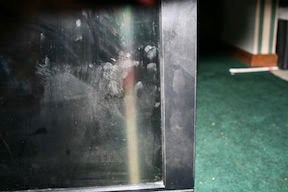
Hours after Chambers' death, back at the burgled house, GBI Special Agent Jason Shoudel took a photograph of a Sharp flatscreen television. It had been moved to the middle of the living room during the burglary. Smudges of fingerprints covered the screen. Shoudel lifted the fingerprints from the TV onto 3-by-5-inch index cards. He did the same with suspected prints on the front-screen door of the house, which had been pried open during the burglary.
The next day, Weathersby, the GBI agent, watched as a medical examiner took ink fingerprint impressions from Chambers’ dead body.

But these two sets of fingerprints were never analyzed for a match. Nothing, it seems, could link Chambers more directly to the house than his own fingerprints, yet investigators appear to have never taken this step.
“Curious, right?” Droubi, the lawyer, told HuffPost.
The day after Shoudel lifted the fingerprints from the TV and the screen door, he handed the prints over to the Houston County Sheriff’s Department, a request under Georgia’s Open Records Act revealed.
“The very fact that GBI handed those documents/records back to the Houston County Sheriff’s department, when they’re supposed to be an investigative agency that’s separate from the Houston County sheriff’s office, is entirely questionable,” Droubi said. “They’re supposed to be doing this analysis completely independently, so why would they then share that information with the Houston County Sheriff's Department?”
GBI Special Agent in Charge Lisa Harris, who runs the bureau's open records requests, told HuffPost that GBI handled only the investigation into Chambers’ death, not the investigation into the burglary. The agency handed the prints over because they weren't trying to figure out who broke into the house, she said.
The sheriff’s department insisted to HuffPost that GBI had matched prints to those taken from the TV and the front door, but Harris said that wasn’t the case.
The sheriff’s office provided HuffPost with scanned copies of fingerprints lifted from the burgled house, but the copies were not of high enough quality to conduct an independent analysis, a forensic expert said. The department did not respond to repeated requests for higher-quality copies.
The Crime Scene

In the “heat of battle,” as Glidden described in his police report, Chambers began to sprint away after the two fell to the ground. The teen rounded a right corner and took off down a dirt path. Glidden, allegedly still on his knees, raised his Glock and fired. Despite the distance the two had from each other, and a tree that would have at least partially been blocking Glidden’s view, the officer still managed to strike the teen on the back left side of his head with just a single shot.
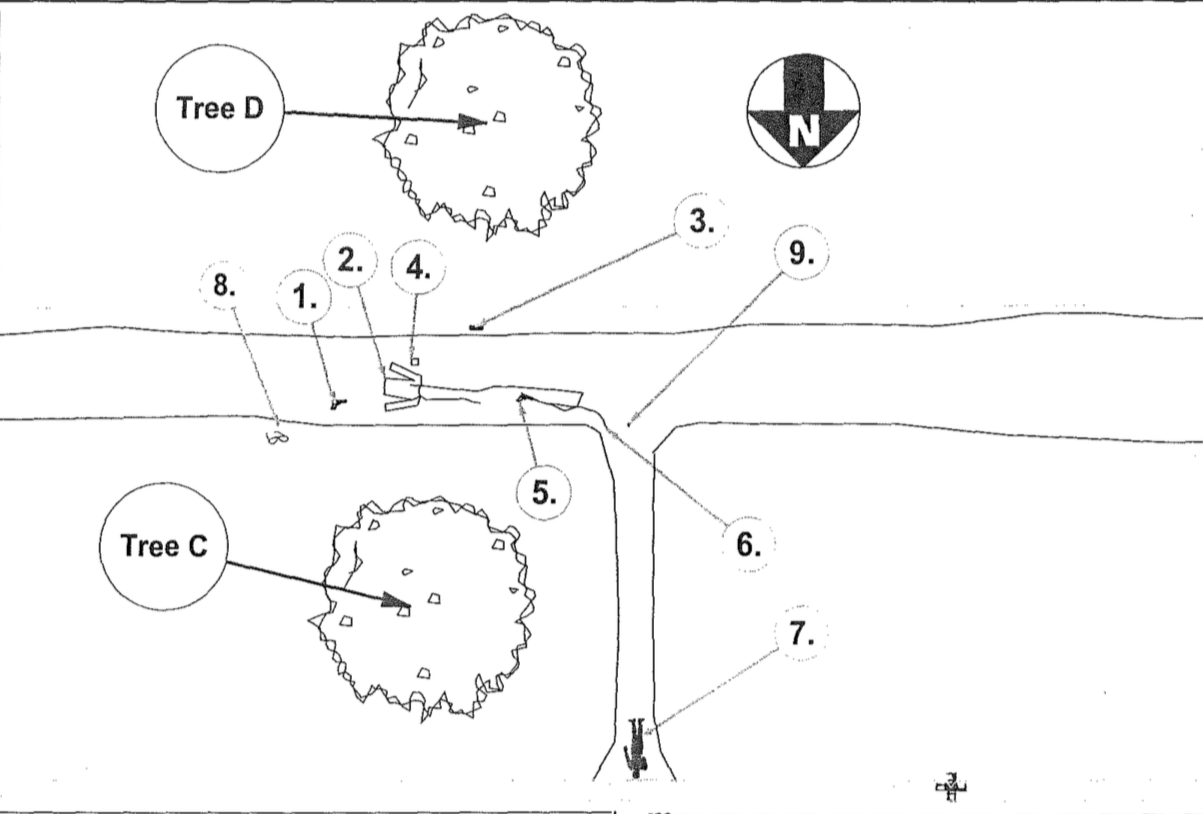
The lawyers find this account problematic. How could the bullet have gone into the left side of Chambers’ head if Glidden was facing Chambers' right side? More troubling, Glidden’s bullet case sat more than 30 feet from where he said he shot Chambers, the attorneys said.
Droubi believes Glidden took his shot at Chambers from much closer than he described.
Crime scene photos of Chambers’ body add to Droubi’s skepticism. In one photo, a trail of blood and brain matter stains the dirt path several inches above Chambers’ head. The photos also show the teen’s shirt and sweater lifted up, exposing his bare back. Chambers, who died instantly, can be seen with grass clippings only on the right side of his arm.
Droubi said this is evidence that the teen’s body was dragged after his death. She said Glidden likely stopped dragging the teen when he noticed the trail of blood and drag marks in the dirt path he created.
The Other Suspect
As units began to arrive on the scene of the burglary, two sheriff's deputies went to check on a possible suspect that lived in the area. That suspect is mentioned only once in more than a dozen police reports, and the deputies ultimately said they could not find him. Lawyers for the Chambers family say this man could be their burglar.
The man, in his 20s, is not being named because he has not been charged with this crime. But in a 2013 Facebook post, he apologized to those he robbed in the past. "Ok, if I have robbed you, or we have beef for another reason it is over with as of tonight ... I’m done with the bs and I’m sending out a worldwide apology," the post reads.
The post is one of many.
“You done crossed so many people you got the whole town hating on you,” a Facebook friend of the man posted on his page. “I ain’t never in my life think someone would cross me the way you did.”
According to a police report obtained by HuffPost, cops believe that whoever robbed the house on Jan. 24 -- the day Chambers was killed -- was also responsible for the Jan. 12 break-in. But Chambers wasn’t even in Warner Robins on Jan. 12 -- he was an hour away at his sister’s in Eastman.
“On January 12, 2011, Robert was staying with me in Eastman, Georgia,” Chamber’s sister said in an affidavit in the wrongful death lawsuit. “I know that because he had just broken up with his girlfriend. He came to stay with me for two weeks to recover.”
Droubi, the lawyer, pointed out that the possible suspect whom authorities attempted to check out in connection with the break-in had been released from jail on Jan. 6, 2011 -- just six days before the first burglary. He has been arrested at least 12 other times, and at the time lived just a 30 minute walk from Brown’s, not including potential shortcuts. By the time Chambers was killed, this other suspect may have already been comfortably home, Droubi said.
Droubi said police should have checked the possible suspect's fingerprints against those taken at the scene of the burglary.
“Any reasonably competent police officer investigating these crimes would have checked to determine if the fingerprints found at the scene of the burglary in fact matched his prints,” the lawsuit alleges.
The possible suspect was not available for comment. He is back in custody of the Houston County Sheriff’s Department on a theft charge.
'I Just Want His Name Cleared'
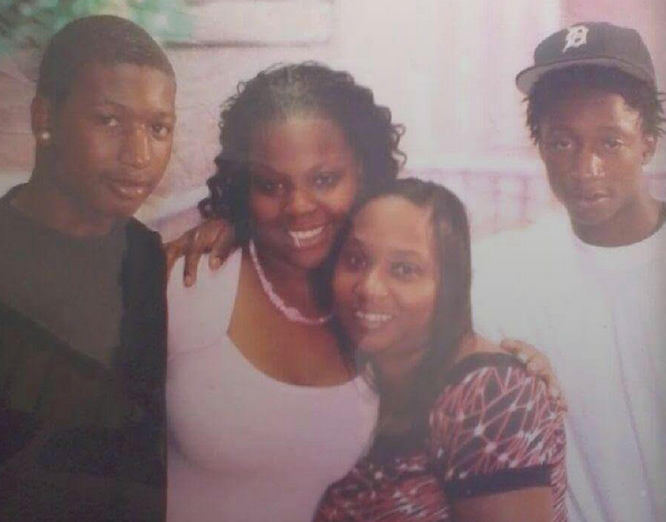
As a single parent, Wells said she relied on her three children to take care of her and each other.
“I raised them with a bond, we have a bond,” she said. “All that’s been stripped. All that’s been taken away from me.”
Now, there are no more gatherings, no more celebrations and no more laughing with her son. Wells’ daughter moved to Florida, unable to live in the same town where her brother was killed.
Chambers came from a family of nurses that taught him to show respect to everyone, his uncle Chris Wells said.
“Robert didn’t make any enemies,” his uncle said. “If there was ever an opportunity for there to be an altercation or anything aggressive, he was the type of person to walk away. He never wanted to be in trouble for anything.”
“He didn’t like to get in trouble, or for people to fuss at him about things he’s done wrong,” Sharese Wells said. “He was very mannerable: It was always ‘yes sir, no sir,’ with him.”
After Glidden fired his Taser at Chambers, the weapon began recording a video of their final encounter. In the 20-second clip, the officer can be heard screaming at Chambers to get on the ground. “I’m on the ground, sir,” Chamber says, remaining polite.
The footage doesn't offer a clear explanation of what happened. Droubi and Moore say it shows Chambers sprinting away after being forced to the ground. Seconds later, a single gunshot rings out.
Sharese Wells knows her son isn’t coming back. All she can ask for now is that his name be cleared.
“His character was ruined,” she said. “They described a totally different child from what he was, and they make him seem like he was this terrible thug kid. I just want his name cleared for who he was.”
In the meantime, Wells said she finds peace in believing that officer Glidden is just a flawed man.
“Did this police officer just wake up saying I feel like killing someone today? No. I don’t feel like that,” she said. “I hope and I pray that he’s not this angry, vicious person that just says ‘I got the right to kill.’”
In the years since Chambers' death, national attention has been focused on the killing of black men by law enforcement officers. There was Eric Garner in Staten Island; Walter Scott in Charleston, South Carolina; and Freddie Gray in Baltimore. According to The Guardian’s “The Counted” project, which tracks police-involved deaths, over 900 people, a disproportionate percentage of whom were black, have been killed by police this year in the United States.
Among the numerous pro-gun and pro-cop memes Glidden has posted to his Facebook wall over the past four years, since killing Chambers, there is a picture of a badge. “Officer Wilson, I stand by you. 8.9.14,” the badge reads. Wilson, a white officer in Ferguson, Missouri, shot and killed an 18-year-old black teen named Michael Brown on Aug. 9, 2014. Brown’s death sparked national protests and was a catalyst for the Black Lives Matter movement.
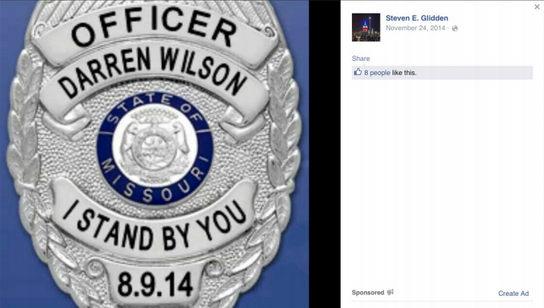
The day Chambers died, his family gathered at Sharese Wells’ house to mourn. The telephone rang, and Chris Wells answered. A week earlier, a friend had set Chambers up with an interview at a Kroger grocery store. He was calling to say he got the job.
-----
Christopher Mathias is a national reporter at The Huffington Post covering social justice. Have a tip? Email christopher.mathias@huffingtonpost.com.
